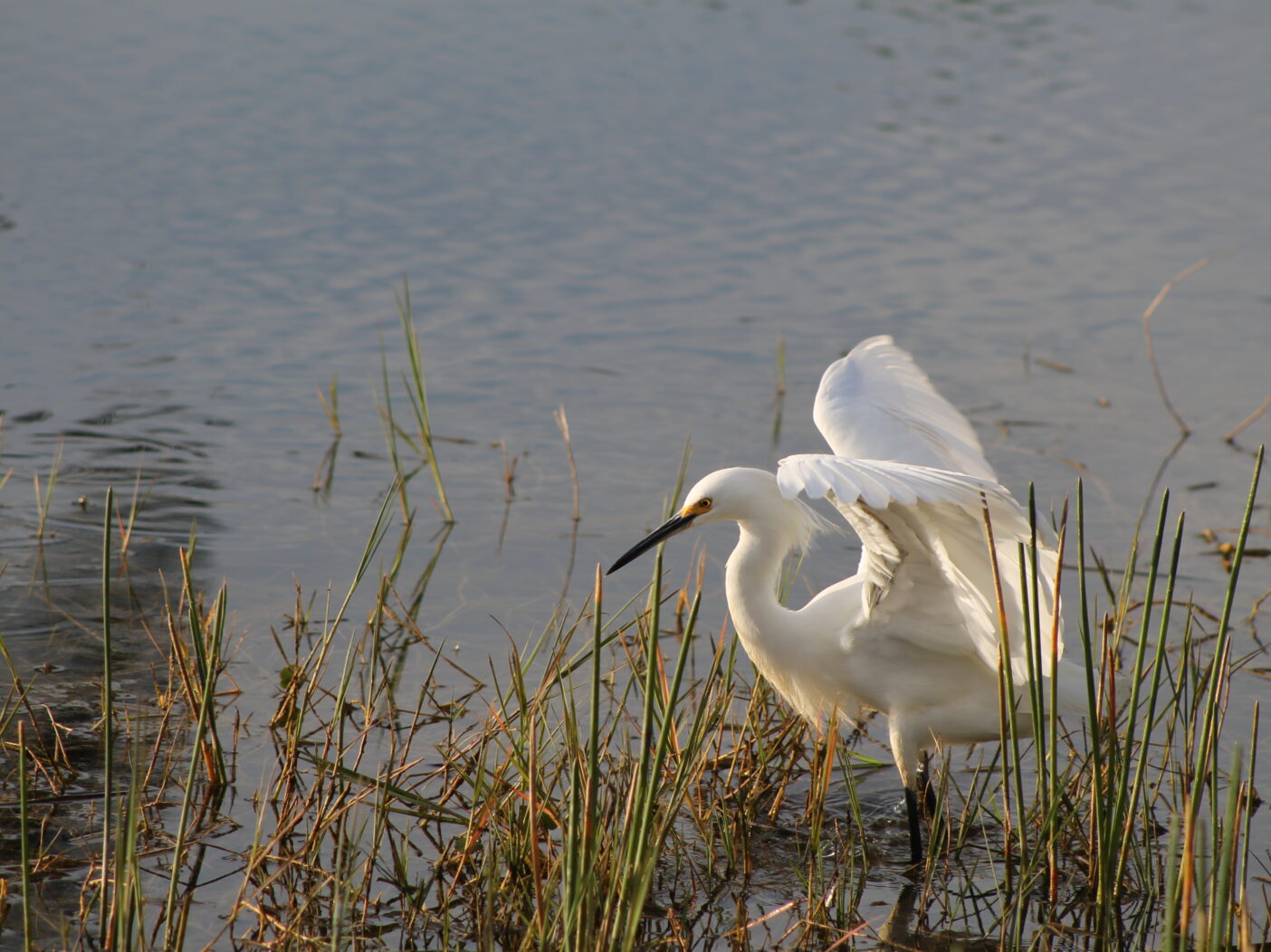
“There’s a dreadful disease,” Arthur Sissman cautions from the other end of the phoneline. “I call it ‘bird-itis.’”
This ailment, we promise, is a welcome distraction from the other one.
Arthur is one of the birding regulars and guides who visits the Garden weekly for bird-watching excursions. The Garden is closed, and the large birding groups have splintered into solo ventures. No matter. With Arthur’s primer, you can start birding from your backyard.
1. Grab your gear.
If you have binoculars, dust them off. Make sure you focus them before heading out. If you become afflicted with “bird-itis” and decide to purchase binoculars, Arthurs recommends those with 8 X 42 magnification. (Here’s an article for more information on choosing binoculars.) You’ll also want a notebook, water bottle (it’s hot out there!), and perhaps a camera to document your finds.

2. Choose a guidebook or electronic resource.
Guidebooks, which come in an array of formats and illustration types, are personal choices, Arthur says. He recommends Peterson Field Guides, National Geographic Field Guides, and Sibley Field Guides. Audubon, Stokes, and Smithsonian Field Guides are also good choices and abound with photographs. You may also consider smaller, foldout guides focusing on a geographic region.
In lieu of a printed guide, e-resources abound. Popular apps include eBird, Merlin, and Birdseye.

3. Know the basics!
Cornell’s Bird Lab offers primers on how to identify birds here.
Guidebooks are arranged by bird families. Here’s an easy-to-use reference guide on basic taxonomy. You’ll also need to know the parts of a bird — the crown, the breast, the rump, etc. Here’s a great graphic to review before you head out.

4. Choose a location.
Cornell’s eBird, which relies on citizen-submitted data, can be used to access real-time data from your community. Click here for the latest bird sightings in Collier and here for Lee. Go to the “hotspots” tabs to find out where birders see the most birds. The “overview” tabs list which species have been spotted, and the “illustrated checklist” shows you photos — a perfect resource for beginning birders! Be sure to check whether your chosen location is open before leaving home.
5. Start big.
“Go for the big birds. Don’t start with the little ones if you are just starting out,” Arthur advises. He suggests seeking out big wading birds, particularly if you don’t own binoculars. Marshes are a great place for a first excursion, he says. (If you prefer staying home, check out the photos in this post — all are birds photographed at a neighborhood retention pond in Fort Myers!)

6. Sharpen your observations.
Bird watching teaches the difference between passively seeing your surroundings, and actively looking for details.
Record your general impressions:
Is the bird big or small? What’s its habitat? What is its shape? Then, make note of its “field markings” (refer back to that graphic showing the parts of a bird).
Bill: shape and size
Head: markings, crest, eye ring
Breast: solid, speckled, striped
Back: color, pattern
Wings: color, pattern
Tail: length, shape
Birding will change the way you interact with nature, Arthur promises. With newly attuned eyes, you’ll suddenly see birds where you never saw them before.
“They’re everywhere, and they are just waiting for you to see them,” he says.
 About the Author
About the Author
Jennifer Reed is the Editorial Director of Naples Botanical Garden and a longtime Southwest Florida journalist.

